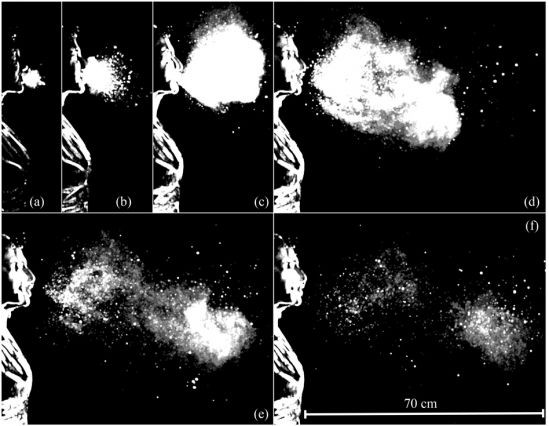High-Speed Camera Captures How Far Sneezes Travel, Could Help Prevent Airborne Diseases

Sneezes are your immune system's way of protecting you from harmful bacteria and viruses, with some fluids traveling at about 100 miles an hour away from your face. In an effort to understand how certain illnesses spread, researchers from the Massachusetts Institute of Technology (MIT) used high-speed cameras to capture footage of how sneezes distribute into the air. The study is published in the journal Experiments in Fluids.
"It's important to understand how the process of fluid breakup, or fluid fragmentation, happens," said the study’s co-author Lydia Bourouiba, the head of the Fluid Dynamics of Disease Transmission Laboratory at MIT, in a statement. "What is the physics of the breakup telling us in terms of droplet size distribution, and the resulting prediction of the downstream range of contamination?"
Bourouiba and her research team captured footage with a camera operating 6,000 to 8,000 frames per second of three different human participants sneezing straight ahead for a total of 100 times. Each sneeze only lasted for approximately one-fifth of a second, and instead of the sneezes forming uniform clouds of droplets like one might imagine, they distributed into the air in patterns. The fluids are ejected as compact sections that explode into a balloon shape and then break apart into long filaments.

"What we saw was surprising in many ways," Bourouiba said. "We expected to see droplets coming out fully formed from the respiratory tract. It turns out that’s not the case at all."
By using different participants, researchers hoped to identify what kind of individual is a "super spreader" and put those who had more elastic saliva expelled fluid that stayed in a filament form longer, which then formed beads along the filaments that slid off as droplets. In the last moments of a sneeze — what the human eye typically has time to witness — the fluid disperses into a spray of droplets.
"The way transmission routes are being quantified even today still rely on the traditional way that has prevailed for hundreds of years, which is talking to people to survey who they talked to, where did they go, et cetera," Bourouiba said. "There are clear limits to the accuracy of the data, and we are trying to have more precise measures of contamination and ranges to root disease control and prevention strategies."
The MIT team is currently setting up a new lab space with climate-controlled chambers with enough room to test multiple participants at a time. They plan on cataloging all different types of sneezes, coughs, and other types of disease transmissions. Their next goal is to tackle how the common cold and flu is transmitted at different times of the year.
Source: Bourouiba L. Experiments in Fluids. 2016.



























